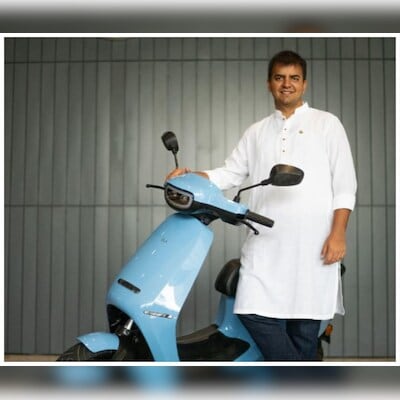Will have our cells in EVs by early 2025: Ola Electric’s Bhavish Aggarwal
According to sources, Ola Electric is targeting a $6-7 billion valuation through the offering
According to people familiar with the matter, Ola Electric, the electric vehicle startup by Bhavish Aggarwal, is preparing to file for an initial public offering (IPO) by next month.
Ola Electric received official approval from the market regulator, the Securities Exchange Board of India (Sebi), on June 20 for its IPO, where the firm aims to raise Rs 7,250 crore. Following the regulator’s nod, Ola Electric is set to become the first Indian electric vehicle company to go public.
However, when asked during a press briefing, Ola Electric’s chairman and managing director Bhavish Aggarwal did not commit to a specific timeline for the IPO. He stated that the company is going through various steps.
“We are going through the steps, and it would be premature for me to comment on the timeline,” said Aggarwal during a media briefing on Saturday. “Sebi also has to review other documents and approve things.”
According to sources, Ola Electric is targeting a $6-7 billion valuation through the offering.
Aggarwal plans to sell up to 47.4 million shares, equivalent to a 3.48 per cent stake in the IPO. Other selling shareholders include Indus Trust, Alpine Opportunity Fund, DIG Investment, Internet Fund III (Tiger Global), MacRitchie Investments, Matrix Partners, SoftBank Vision Fund, Alpha Wave Ventures, and Tekne Private Ventures.
According to the draft red herring prospectus (DRHP), the proceeds from the fresh issue will be allocated towards capital expenditure (capex), debt repayment, and research and development (R&D). Of the total capital raised, the firm plans to invest Rs 1,226 crore in capex and allocate Rs 800 crore for debt repayment. It intends to spend Rs 1,600 crore on R&D and Rs 350 crore on organic growth initiatives.
Indigenous Cells
The SoftBank-backed firm plans to power its electric vehicles with its lithium-ion battery cells by early next year. These cells will be manufactured at its newly set Ola Gigafactory in Krishnagiri, Tamil Nadu. This would help reduce reliance on imports and lower electric vehicle production costs, according to industry experts. India’s electric vehicle makers currently depend on lithium-ion battery cells from countries such as Korea, China, Japan, and Taiwan.
“We have begun trial production. Globally, only a few countries have gigafactories, and within them, only a few companies have this level of advanced cell technology. Our focus is on doing all the steps required to build a good-quality cell. We have been able to set up a world-class laboratory and develop our intellectual property,” said Aggarwal. “In terms of timeline, early next year is when you can expect to see our cells in our products. We are well on our way and are in the final stages of the process.”
This gigafactory is the first of its kind for Li-ion cell manufacturing in India, with an initial capacity of 5 gigawatt hours (GWh). It will be further scaled up in phases to 100 GWh at full capacity.
Aggarwal said that the company has already invested about $100 million for phase A of the gigafactory expansion.
A gigafactory is a facility where equipment and components related to electrification and decarbonisation technologies are manufactured.
Last year in February, Ola signed a Memorandum of Understanding (MoU) with the Tamil Nadu government committing investments of Rs 7,614 crore for manufacturing electric cars, two-wheelers, and the lithium cell gigafactory in the state.
At a time when there has been a reduction in the Faster Adoption and Manufacturing of Electric Vehicles (FAME) subsidy, Aggarwal said that he aligns with the government on this move.
“FAME subsidy has been tapering off over the last two or three years, and the government has been very clear in its communication to the industry. As the electric vehicle industry is starting to mature and more component manufacturing is happening in India, the cost of manufacturing is coming down,” said Aggarwal. “We align with the government’s direction of gradually tapering off the FAME subsidies and, in some areas, replacing them with production-linked incentive (PLI) schemes.”
Women Workforce
At a time when Foxconn, a major manufacturer of Apple devices, has been excluding female candidates from assembly jobs at its Indian smartphone plant because they are married, Aggarwal said that the firm encourages hiring women.
At full capacity, the Ola Futurefactory is expected to become the world’s largest women-only factory and the only all-women automotive manufacturing facility in the world.
“We have an all-women factory, probably the only such factory in the automotive industry,” said Aggarwal. “Women are more disciplined and dexterous. We do not have any policy like that of Foxconn to not hire married women. Now that the gigafactory is coming up, it will also be an all-women factory.”
First Published: Jun 30 2024 | 6:58 AM IST
